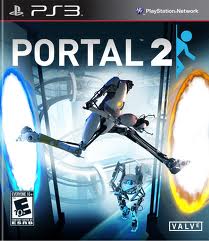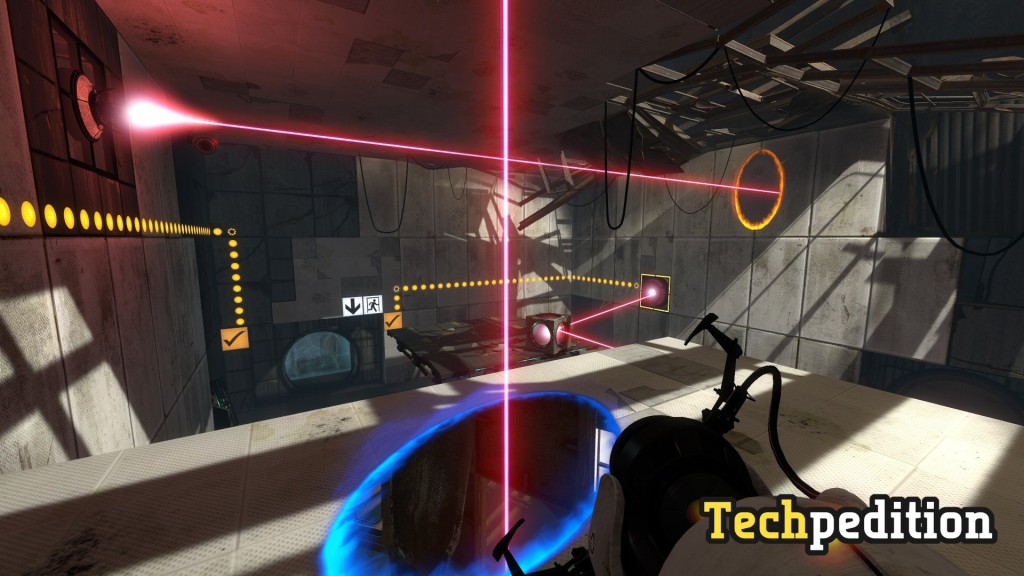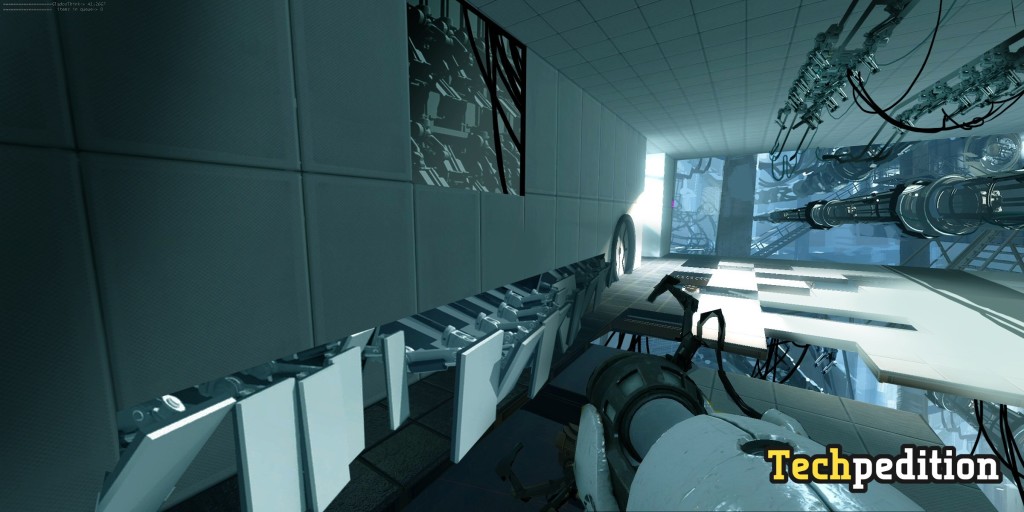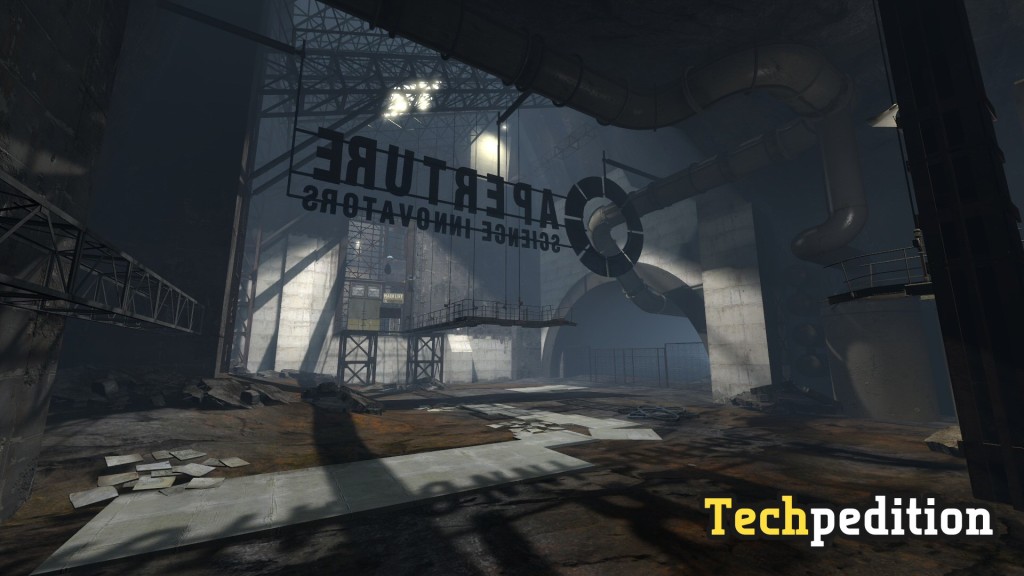Portal 2 Review
 GLaDOS and Chell are back and as promised by Valve their adventure is bigger and more ambitious than the modest Orange-Box-included original Portal. While Portal 2 picks up where the first one left off, in both game design and style, it also takes the characters through settings and back stories that no one could have seen coming. As one of the most anticipated games of the year, Portal 2 had extremely high expectations to live up to, and I’m not sure that in the end it lives up to all of them.
GLaDOS and Chell are back and as promised by Valve their adventure is bigger and more ambitious than the modest Orange-Box-included original Portal. While Portal 2 picks up where the first one left off, in both game design and style, it also takes the characters through settings and back stories that no one could have seen coming. As one of the most anticipated games of the year, Portal 2 had extremely high expectations to live up to, and I’m not sure that in the end it lives up to all of them.
Wheatley, an artificially intelligent personality core, similar to GLaDOS, is the first character you meet when starting the game. Your character of Chell has been in stasis for quite a long time and Wheatley is breaking you out of the Aperture Science Labs. After an amazingly animated opening sequence, and Wheatley’s informal and frantic introduction, you are dropped into the test rooms. Through an accident, GLaDOS gets woken and the situation begins to resemble the original Portal: GLaDOS+You+Test Chambers. Its nice that Valve took some time to create a bit more of a story framework upfront, but it was very comfortable to be back in the test rooms, and GLaDOS agrees.
Because of the time spent in stasis, and with GLaDOS dead, the test areas have fallen into disrepair. While this may seem like nothing more than cosmetic difference, it allows for GLaDOS’ character to shine as she acknowledged the problems with the rooms and comments on her attempts to repair them. The humor from the first game is still present. In fact I think it might be almost overwhelming. GLaDOS continues to be chatty along with the wonderfully voiced Wheatley. For a game with a silent protagonist, all of the other characters talk like their in a Kevin Smith movie. About a 4th of the way through it became very obvious that the characters would be making jokes on every level at the exact same queues. The jokes are funny, and add a nice commentary, but no matter how good something is, once you see the formula, some of the luster disappears.

After dealing with GLaDOS again, some hilarious story events happen (that I will leave out for spoilers sake) and Chell ends up at the very bottom of the seemingly infinitely deep Aperture Science Facility. At this point, the game takes an interesting turn. What was clearly a Portal game prior to the fall, turns into what can only be described as a Bioshock-esq Half-Life game with a portal gun. The comparison to Bioshock is only in setting and tone since when you are working your way up the facility, your character visits portions of the Aperture facility built during different periods of the company’s history. This turns the game into somewhat of a period peice. As Chell gets closer to the surface, the facilities get newer.
The exploration aspects of Half-Life are alive and well in the second act of Portal 2. The Portal gun might as well be the gravity gun and the setting might as well be a ventilation shaft in City 17. In these levels, alot of new things are introduced, including Repulsion Gels, many story threads and Cave Johnson. Cave is the founder of Aperture Science and through the magic of recordings he is able to give you humorous direction through the facility and tongue and cheek commentary on the state of the Aperture Science company during the time periods of the recordings. Cave is voiced by the fantastic J.K. Simmons (J. Jonah Jameson in the Spider-man movies). Just like GLaDOS, Jamison has a dry almost non-purposeful sense of humor. This whole section of the game, while having the same mechanics, just feels different, like the spot in the first Portal where you break out of the chambers did. Its still the same game, but the purpose and execution of the portal mechanics are drastically changed. In addition to that, the Repulsion Gels are probably the biggest addition to the standard Portal formula.

Blue gel, makes whatever surface its on bouncy, and orange gel makes the surface slick and easy to run upon. Chell uses the portals to manipulate where the gel will be placed. This creates a level of depth that hasn’t been seen in the series. A third gel, white, makes previously un-portal-able surfaces portal-able. The introduction of the gels is smooth and clear, making the transistion to using them easy. After working your way up through the old sectors, act three of the game brings you back to the standard testing area. To give any more details would be treading a bit too close to the plot, so let’s move on.
Like Valve’s previous games, Portal 2 is more polished than 90 percent of the console games currently on the market. The puzzles are smart, the writing is clever, the characters are interesting and genuinely funny, and the game is fun…really fun. However, coming from what the original Portal was, with its insanely difficult rooms and its conveniently segmented structure, Portal 2 could have been a nearly infinite game. A level editor is not included, and there are no bonus test rooms. A game that is broken into rooms like Portal, is ripe for user created lunacy. There is a serious lack of unimaginably hard rooms. With the combiniation of the repulsion gels and portals, the rooms could be so complex that the average player would pull their hair out, and logic nerds would salivate over them. Sure, with the Steamworks support, the PS3 could probably easily patch in this feature, but for it not to be present when shipped is somewhat of an oversight.
Speaking of the Steam functionality, the claims of integration were 100% accurate. From the Steam dashboard in Portal 2, features like friend status, game invites and cloud saves are all available. Cross platform gaming is present with the PC and the PS3, and the activation of my PC copy of the game went perfectly. Right now there’s not much that can be done with the client, but its inclusion is a step in the right direction for both console and PC gaming.

Co-op is similar to the single player campaign in that portals are used to navigate test rooms, but each room can only be completed by a team of two players. While initially a bit alarming, Co-op became less daunting after the first few levels. Thinking with 2 portals is VERY different from thinking with 4 portals. Communication with your partner is required since the challenge rooms can get pretty complex. Never fear though, there’s a buildt in ping and point system that allows your characters to point at places on the level. This helps organize where you and your partner will portal to. So, even players without headsets can give orders their fellow players. The Co-op campagne is also pretty lengthy. Its nice having a meaningful co-op experience, instead of a co-op experience that is just 2-4 people shooting people together. The co-op play through requires thought, teamwork and foresight, things that are hard to come by in modern gaming. Valve was even nice enough to explain how the co-op experience fits into the lore of the franchise.
Overall Portal is more than I thought it would be while simultaneously falling short in a few areas. Its a great playthrough and will require some heavy thinking. Hopefully Valve supports Portal 2 with the same level of DLC to which fans have become accustomed. Its been established that the Half Life and Portal universes co-exist, and Cave Johnson even throws in a Black Mesa reference, but this time around there’s sign of a crossover. If you’re bright and want a decent and unique brain challenge, portal is the way to got. If you are a meathead that lives on twitch based games alone, stand clear of Portal 2…I’m sure another Call of Duty will be out in November.
Verdict: The Source engine has never looked better and to answer your question, yes, GLaDOS sings a song over the credits again. Its not as good as “Still Alive” but its still funny.



